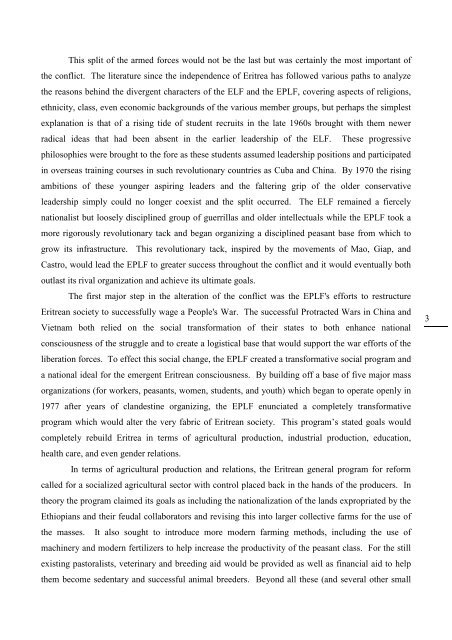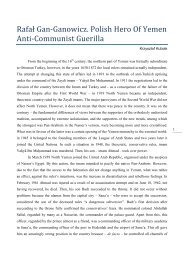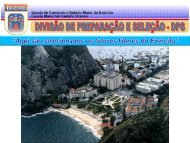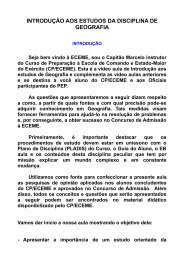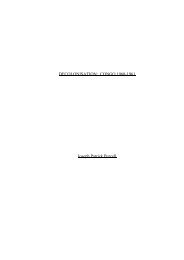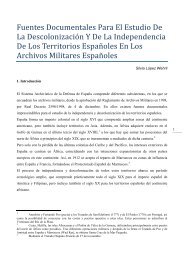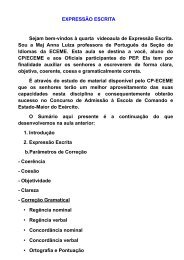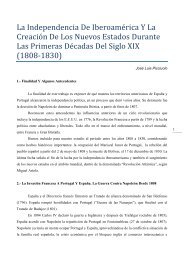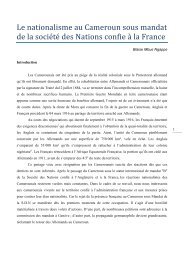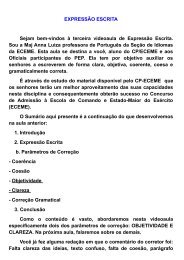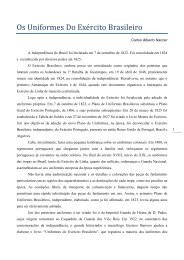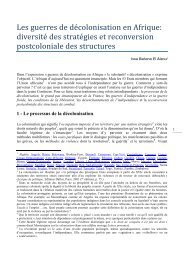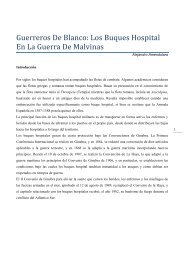34- The Road to Afabet The EPLF, Protracted Warfare, and the ...
34- The Road to Afabet The EPLF, Protracted Warfare, and the ...
34- The Road to Afabet The EPLF, Protracted Warfare, and the ...
You also want an ePaper? Increase the reach of your titles
YUMPU automatically turns print PDFs into web optimized ePapers that Google loves.
This split of <strong>the</strong> armed forces would not be <strong>the</strong> last but was certainly <strong>the</strong> most important of<strong>the</strong> conflict. <strong>The</strong> literature since <strong>the</strong> independence of Eritrea has followed various paths <strong>to</strong> analyze<strong>the</strong> reasons behind <strong>the</strong> divergent characters of <strong>the</strong> ELF <strong>and</strong> <strong>the</strong> <strong>EPLF</strong>, covering aspects of religions,ethnicity, class, even economic backgrounds of <strong>the</strong> various member groups, but perhaps <strong>the</strong> simplestexplanation is that of a rising tide of student recruits in <strong>the</strong> late 1960s brought with <strong>the</strong>m newerradical ideas that had been absent in <strong>the</strong> earlier leadership of <strong>the</strong> ELF. <strong>The</strong>se progressivephilosophies were brought <strong>to</strong> <strong>the</strong> fore as <strong>the</strong>se students assumed leadership positions <strong>and</strong> participatedin overseas training courses in such revolutionary countries as Cuba <strong>and</strong> China. By 1970 <strong>the</strong> risingambitions of <strong>the</strong>se younger aspiring leaders <strong>and</strong> <strong>the</strong> faltering grip of <strong>the</strong> older conservativeleadership simply could no longer coexist <strong>and</strong> <strong>the</strong> split occurred. <strong>The</strong> ELF remained a fiercelynationalist but loosely disciplined group of guerrillas <strong>and</strong> older intellectuals while <strong>the</strong> <strong>EPLF</strong> <strong>to</strong>ok amore rigorously revolutionary tack <strong>and</strong> began organizing a disciplined peasant base from which <strong>to</strong>grow its infrastructure. This revolutionary tack, inspired by <strong>the</strong> movements of Mao, Giap, <strong>and</strong>Castro, would lead <strong>the</strong> <strong>EPLF</strong> <strong>to</strong> greater success throughout <strong>the</strong> conflict <strong>and</strong> it would eventually bothoutlast its rival organization <strong>and</strong> achieve its ultimate goals.<strong>The</strong> first major step in <strong>the</strong> alteration of <strong>the</strong> conflict was <strong>the</strong> <strong>EPLF</strong>'s efforts <strong>to</strong> restructureEritrean society <strong>to</strong> successfully wage a People's War. <strong>The</strong> successful <strong>Protracted</strong> Wars in China <strong>and</strong>Vietnam both relied on <strong>the</strong> social transformation of <strong>the</strong>ir states <strong>to</strong> both enhance nationalconsciousness of <strong>the</strong> struggle <strong>and</strong> <strong>to</strong> create a logistical base that would support <strong>the</strong> war efforts of <strong>the</strong>liberation forces. To effect this social change, <strong>the</strong> <strong>EPLF</strong> created a transformative social program <strong>and</strong>a national ideal for <strong>the</strong> emergent Eritrean consciousness. By building off a base of five major massorganizations (for workers, peasants, women, students, <strong>and</strong> youth) which began <strong>to</strong> operate openly in1977 after years of cl<strong>and</strong>estine organizing, <strong>the</strong> <strong>EPLF</strong> enunciated a completely transformativeprogram which would alter <strong>the</strong> very fabric of Eritrean society. This program’s stated goals wouldcompletely rebuild Eritrea in terms of agricultural production, industrial production, education,health care, <strong>and</strong> even gender relations.In terms of agricultural production <strong>and</strong> relations, <strong>the</strong> Eritrean general program for reformcalled for a socialized agricultural sec<strong>to</strong>r with control placed back in <strong>the</strong> h<strong>and</strong>s of <strong>the</strong> producers. In<strong>the</strong>ory <strong>the</strong> program claimed its goals as including <strong>the</strong> nationalization of <strong>the</strong> l<strong>and</strong>s expropriated by <strong>the</strong>Ethiopians <strong>and</strong> <strong>the</strong>ir feudal collabora<strong>to</strong>rs <strong>and</strong> revising this in<strong>to</strong> larger collective farms for <strong>the</strong> use of<strong>the</strong> masses. It also sought <strong>to</strong> introduce more modern farming methods, including <strong>the</strong> use ofmachinery <strong>and</strong> modern fertilizers <strong>to</strong> help increase <strong>the</strong> productivity of <strong>the</strong> peasant class. For <strong>the</strong> stillexisting pas<strong>to</strong>ralists, veterinary <strong>and</strong> breeding aid would be provided as well as financial aid <strong>to</strong> help<strong>the</strong>m become sedentary <strong>and</strong> successful animal breeders. Beyond all <strong>the</strong>se (<strong>and</strong> several o<strong>the</strong>r small3


